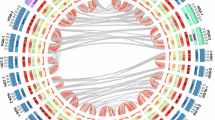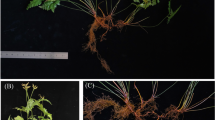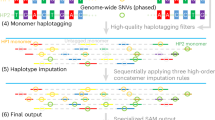Abstract
HAPLOIDY was first reported to occur in Datura stramonium by Blakeslee et al.1. Since then, haploids occurring spontaneously or induced under artificial conditions have been recorded in many flowering plants2. As far as we are aware, haploidy in Corchorus has not yet been reported. Datta3 reported a case of polyembryony in Corchorus without, however, any cytological analysis of the twin seedlings.
This is a preview of subscription content, access via your institution
Access options
Subscribe to this journal
Receive 51 print issues and online access
$199.00 per year
only $3.90 per issue
Buy this article
- Purchase on SpringerLink
- Instant access to full article PDF
Prices may be subject to local taxes which are calculated during checkout
Similar content being viewed by others
References
Blakeslee, A. F., Belling, J., Fernham, M. E., and Bergner, A. D., Science, 55, 646 (1922).
Kehr, A. E., J. Heredity, 42, 107 (1951).
Datta, R. M., Sci. and Cult., 25, 642 (1960).
Chandrasakharan, S. N., and Parthasarathy, S. R., Cytogenetics and Plant Breeding (P. Varadachary and Co., India, 1948).
Author information
Authors and Affiliations
Rights and permissions
About this article
Cite this article
JACOB, K., SEN, S. Haploidy in Jute (Corchorus olitorius L.). Nature 192, 288–289 (1961). https://doi.org/10.1038/192288b0
Issue date:
DOI: https://doi.org/10.1038/192288b0
This article is cited by
-
Studies on trisomics in a Jute hybrid
Genetica (1972)



